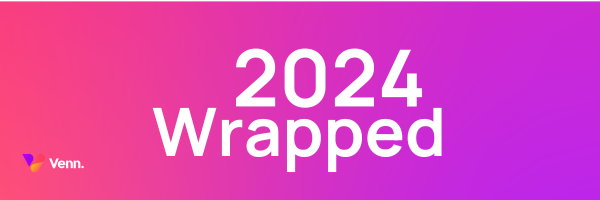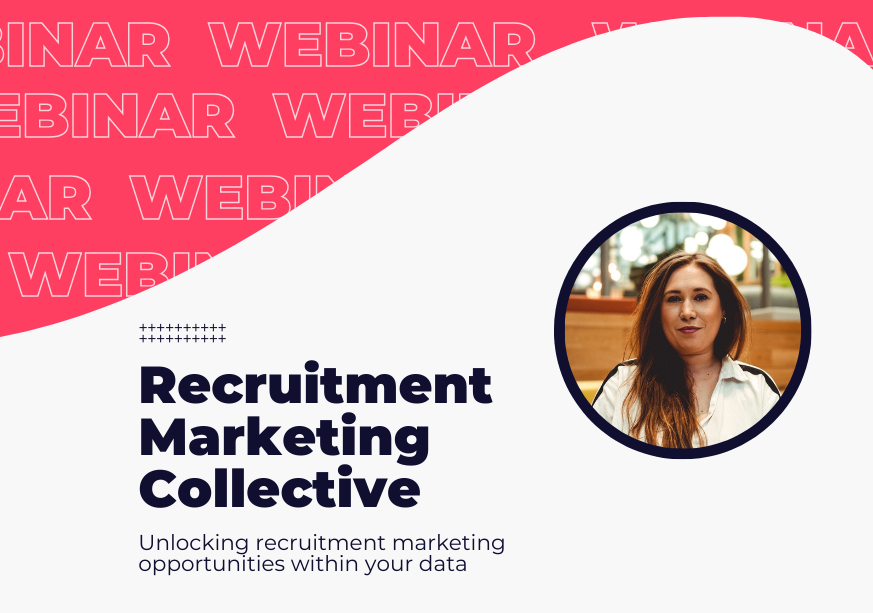Explore our NEW Knowledge Base and Help Desk to find everything you need to attract, engage and convert talent with your Vennture website.
Discover MoreThe Five Ws of Content Marketing and Digital PR
01 Jun, 20163 minutes
Most people are familiar with the concept of the five Ws: who, what, when, where and why. As children writing stories in English lessons we are told to include all these elements to create a compelling tale, and I was told the same during my time as a journalism student.
This principle still stands true with what I do today. The best campaigns work because they tell a story with solid foundations, so how can we use the five Ws idea to shape our campaigns for success?
Who
It might be the first W, but it’s definitely a W that gets overlooked—usually because the people involved believe the information is obvious.
How many clients have you worked with who declared they don’t need to create a customer persona as they know their target audience inside out? This tunnel vision makes clients blind to wider opportunities and sees campaigns fall flat as they miss the mark with their targeting.
There are so many tools available to dig deeper into the people you’re targeting and their interests. First gather some basic information such as who you generally sell to, how they find your product or brand and how much they usually spend. Talk to your sales team or BDMs. Do you have a loyal base of return custom or is your product more of a one-off purchase? What devices do they use? This kind of information should underpin all your marketing efforts and ensures that you’re targeting people in the most appropriate way.
Once you’ve decided on the broad attributes of your customer, think about their personal motivations, challenges and interests. As an example, let’s think about the digital marketing services we offer here at Venn. Our main contact with many clients is via an internal marketing manager. A marketing manager’s personal motivation might be to increase their own digital knowledge, their main challenges might be pleasing their CEO and keeping leads (as well as budgets) in check, and their interests might include making new contacts and networking within the industry.
Using this information, we might decide that a knowledge share and networking webinar, featuring industry contributors, is the right approach, as our target audience will be able to tick two of their boxes by learning something and meeting new people. If they’re trying to convince a sceptical boss of the benefit of digital, case studies telling of digital success stories within their sector, featured in respected industry titles, may swing their opinion.
By getting to grips with the Who of your campaign, you will be able to think of questions or issues your audience might have and use your marketing efforts to answer and solve them.
What
As well as who you’re targeting, it’s vital to think about the second W—the What. In this context, we’ll use What to describe the format of the advertising you chose.
Tools like BuzzSumo and Ahrefs allow you to explore the most shared and engaged with pieces of content on a certain topic. Just use them to search for a subject and you’ll be able to filter by infographic, article, video etc. and begin to understand what presentation of content your chosen audience finds the most compelling.
If, by using your customer personas, you’ve found that your target clients are in-house marketing managers keen to boost their personal knowledge of content marketing, informative blog posts with clickbait-esque titles, such as The Top Ten Free Content Tools You Need to Download, might be the best approach.
If your customer persona suggests your audience is pressed for time, however, they’re unlikely to find a minute in the day to absorb a lengthy blog post. For this segment, consider podcasts they can listen to on the go, slideshows or short videos. Those short on time might also engage well with infographics or other visual formats which display the right information in an easily digested and scannable format.
Another key tool in the quest to find the best format for your audience is Google Analytics. Use it to find which of your pages get the most views and which people spend the most time on, then explore what it is about these pages that makes them so sticky.
It might be tempting to rely on the bells and whistles of tools to analyse the type of content that is best for your audience, but a bit of common sense never goes amiss when deciding on content format. Use tools to inform your decisions, but don’t force a format that doesn’t work. Just think of the most easily digestible way to convey what you’re saying. And don’t forget your biggest knowledge pool—the customers themselves. If you want to find out what kind of content your audience want, profile your existing database with a short survey on what they’d like to see from you and go from there.
When
Now you’ve decided who you’re targeting, and what with, it’s time for W number 3: When.
Again, common sense should be your primary tool. If your main audience are busy, working professionals, aged 25 to 30, don’t schedule your email campaign to go out at 11am. They’ll be hard at work and by the time they get round to checking their emails at lunch your campaign is likely to be far down the unread list behind a number of other messages.
Commuting hours are great for targeting young professionals. Many of us spend our journey to work glued to our smartphones, or catch up with a browse once we get home, so this is a fantastic time to get eyes on content. This demographic are big fans of checking their phones straight before bed too, so scheduling social adverts, email campaigns and more to go out in the evening is also wise. As with anything, just keep testing and keeping track of measurables like open rates and click-throughs. The data will tell you whether you’re targeting people at a time that suits them.
If you’re really committed to the When, real-time content could be for you. This could include responsive blog posts or a Twitter account that responds to breaking events, but be warned – it requires a genuine flexibility and reactiveness that is often very difficult to achieve and maintain.
If you promote a lot of your content via social media you might be interested in research from SumAll which shows the most popular timeframes across the main social media channels. Popular times range from 5pm to 6pm on Instagram (scrolling commuters?) to 1pm to 4pm on Facebook (lunchtime and the afternoon slump). Twitter is popular around the same time as Facebook, but Pinterest is more of a night owl, with its popularity peaking between 8pm and 11pm. Both Facebook and Twitter have tools to measure the most popular times for your followers to be online, or you can utilise third party tools like Tweriod and Followerwonk. Followerwonk also lets you split your followers by region and country, so you can target different time zones.
Where
If you work in-house for a brand then you’ll likely already have an idea of whether your audience are Android or Apple users, if they consume a lot of content on mobile, or whether they’re more likely to do their browsing on a desktop. However, if you juggle multiple accounts within an agency it’s vital to drilldown into each client to work out the fourth W: Where.
It’s easy to assume that the majority of people browse, shop and consume content on their smartphone, but this isn’t always the case and an assumption like this could see you totally missing your audience. Use Google Analytics to track your mobile and desktop traffic and optimise your content accordingly. Again, it’s all about serving your marketing messages in the right format for the people seeing them.
Before you deep dive into Google Analytics and get sidetracked by figures, it’s also worth putting yourself in the seat of your target market as a lot of this kind of stuff is obvious. If regular blogs are part of your marketing strategy and you know your audience are mainly desktop users, then you’re free to make your blogs longer, as they’re likely to be consumed in a setting which makes reading long form more comfortable. But if you know your audience is going to read your blog on their phone, make it shorter, snappier and clearer.
There is a plethora of research out there to help you with your Where. This article on CMI is a great place to start and covers viewing patterns. These patterns are basically the order in which people look at things on a screen, and can be invaluable in helping you to successfully layout your content so that it has the desired impact.
Why
It might be the final W in the traditional order, but Why should really be first when it comes to your marketing efforts.
In March this year, a TrackMaven study suggested that, with the average brand pushing out some 2,000 pieces of content per year, but engagement rates falling massively, we might have reached ‘peak content’. The study looked at 23,000 brands and 50 million bits of content and found engagement down across a variety of platforms.
As consumers ourselves, we don’t need studies to tell us that the fight to make yourself heard in a sea of content is getting more challenging. We are constantly bombarded with marketing messages, and with customers being savvier, fussier and bored of “me-too” content, you need to make sure that you have a really big Why behind whatever you produce. Basically, it has to have a point—a compelling reason for publication.
Joe Pulizzi, founder of the excellent Content Marketing Institute, advocates the idea of epic content. This is based around the simple idea that content has to be useful, engaging, not sales-led and delivered at the right time. This concept is not about interrupting customers, but serving content when they want it.
Your Why should focus on an action. Do you want your customer to sign up for a newsletter? Get in touch with you? Download something? Comment on something? If you keep in mind what you want your audience to do, you’ll be on the right track. The key to getting this part of your marketing strategy right is to track and measure, then tweak if necessary.
Let’s say the customer action you’re after is the downloading of a whitepaper on content marketing but your download rate is poor. Are you giving away all the info in the accompanying blog post, so people don’t need to download? Are you adding a step to the process which is putting people off (making them sign up with lots of personal info?). You need to consider the Why behind your marketing at all times.
Flickr Creative Commons Image: Magenta Rose



